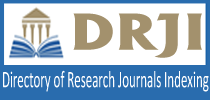Abstract
The relationship between language and culture is a close relationship that cannot be separated from each other. Knowledge of the culture of the Arabic language helps in learning it and mastering its skills and understanding its intellectual and cultural concepts, and learning a culture of cultures, can not only be studied a number of lessons about the customs and traditions of the owners of that language, but the student needs to diversify the sources of knowledge of the culture of native speakers, and this study aims to highlight the cultural dimension in the teaching of Arabic language at the University of Brunei Darussalam, and how to introduce students to Arab culture As a second language culture with respect for the culture of the learner, this study has been summarized by description and analysis of the historical sequence of the experience of the University of Brunei Darussalaam in caring about the cultural dimension in the teaching of Arabic language, the University has a special experience in dealing with Arab culture when teaching Arabic language at the University, and this experience boils down to four main themes, the first of which is: in 2003 the course was prepared in a way that combines arab and local cultures, secondly: In 2010, weekly activities for university students run by the Arab Culture Club began. Annual activities run by the Language Center through cultural language festivals, which began in 2004 in partnership with other languages in the Language Center, and then developed in 2014 where the first Arabic festival, and fourth: in 2015, additional reading aids based on local culture were launched through the translation of the Language Center for Barun folk stories into the languages present at the center, thus characterized by the experience of the University of Brunei Dar es Salaam with its interest in the cultural dimension of language education within and outside the classroom, This study recommends that cultural aspects be taken into account when developing or selecting courses and books implemented; establishing student clubs to introduce Arabic language culture; and organizing cultural festivals to support them.
Keywords
Arabic Language Education; Culture; relations
References
Brown, H.D. 1994. “Principles of Language Learning and Teaching”. The USA: Prentice Hall Regents.
Byram, M., Morgan, C. and Colleagues. 1994. Teaching and Learning Language and Culture. Great Britain: WBC.
Cakir, Ismail 2006. Developing cultural awareness in foreign language teaching. Turkish Online J Distance Edu 7 (3):154–161
Code, Sock lingam, Bron, and Janes 2000. National Standard in Foreign Language Education Project, 1996.
http://lc.ubd.edu.bn/showarabic.html
http://www.arabiclanguageic.org/view_page.php?id=3476
http://www.bt.com.bn/happenings/2014/04/18/ubd-stages-first-arabic-festival#sthash.z7JBxC6H.dpbs
https://www.facebook.com/acc.ubd?fref=ts
https://www.facebook.com/ubd.arab
Paulson, D. & Faust, J. (2006). Active Learning for the College Classroom. Available at: http:/chemistry.calstatela.edu/chem.&Biochem./active/main.html.
National Standards in Foreign Language Education Project, 1996.
Smith, E. L. 1985.”What is the Difference and What Difference Does the Difference Make”. In Forum vol.22.








 This work is licensed under a Creative Commons Attribution-ShareAlike 4.0 International License.
This work is licensed under a Creative Commons Attribution-ShareAlike 4.0 International License.



